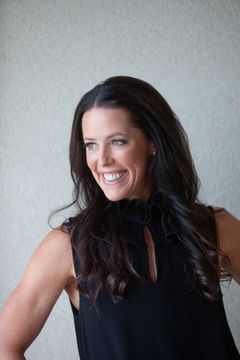Exercise is hard. Maybe not for those who love it or lead it, but therein lies the problem. The people who are most passionate about exercise become the promoters of exercise. I'm a promoter of exercise—for more than 20 years I have stood in front of classes and clients with the hopes of inspiring the uninspired, motivating the unmotivated, and moving those who really don't want to move. And yet it was only about four years ago that I found out I had been approaching this all wrong.
Reading this statement from No Sweat (AMACOM, 2015) by Michelle Segar, Ph.D., was my first clue: “When motivation is linked to distant, clinical or abstract goals, health behaviors are not compelling enough to trump the many other daily goals and priorities they constantly compete with.” What? This is the approach I had been using for ages to help my clients—defining S.M.A.R.T. (i.e., specific, measurable, attainable, relevant and timely) goals and scripting the perfect plan to meet those goals.
I was fortunate to meet and work with Dr. Segar, and spend time discussing her research and observations regarding motivation and exercise. As a result, my view of exercise and how to encourage others to enjoy it was forever changed. Here’s what I learned:
We are always talking about exercise—the number of minutes and the effort we need to sustain, as well as the specific protocols and formulas for achieving results. However, what we really should be talking about is movement and finding joy in those moments we “get” to move.
Sure, going for a run or taking a cycling class might burn more calories and tax your heart more than dancing with your toddler in the living room. And a carefully designed strength-training routine can certainly help you feel and move better. But none of this matters if you won’t do it or, worse, you dread doing it.
When exercise sounds overly complicated, or you’re worried about whether or not you can do it, or you simply don’t like how it feels, it’s natural to opt out. Instead, I urge you to forget the “must dos” for a bit. Rather than worrying about finding the perfect type of exercise for you, choose movement. It can be anything that gets you off the couch. Just be sure to make it something that is convenient and enjoyable for you, personally.
Walking, dancing, riding your bike with your kiddo, swimming, stand-up paddle boarding—it all counts. Your choice need not be conventional, prescriptive or institutional. It just needs to get you moving and bring a smile to your face. The goal is to discover an activity that feels like a gift, Segar says, rather than a chore. Because when you find that one (or more) thing that you look forward to doing (rather than dread doing), the activity that you want more of (rather than out of), that’s when movement is magic.
Moving should make you feel good. And when you find joy in the moment versus attaching the exercise to burning a certain number of calories to achieve a goal in the future, you might actually do it. That’s what we’re after—movement for life, not just to make the number on a scale move.
Don’t forget to give yourself credit for moving. Of course, you will benefit from doing more, but there’s time for that. Instead of immediately aiming for the recommended 150 minutes of activity a week—a goal you may fall short of or be unable to maintain when getting started—set your baseline (how much are you moving each day) and try to meet or beat it for a period of time. The more “wins” you get, the more confident you’ll feel. The more confident you feel, the more you’ll do. You get the picture.
Finally, Dr. Segar cautions against beginning with the wrong “why,” or reason why you want to be active. Changing your why is the secret to success. Instead of attempting to exercise for a goal in the future, whether two weeks or two years in the future, focus on the gift of the moment and find joy in how movement makes you feel right now.
Exercise enthusiasts like me often have a hard time understanding why other people don’t love exercise like we do, but I’ve since come to realize it’s because I’ve discovered the ways I like to move my body that give me joy in the moment, not some reward in the future. My challenge to you is to find the activity, which could be anything from ballroom dancing to jumping on the trampoline with your kids, that brings you this same joy in exercise. I’m absolutely certain that you will find it.




 by
by 





 by
by